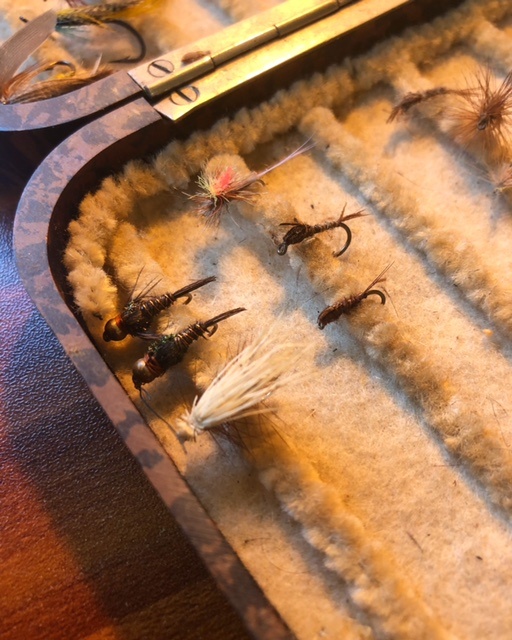Brook trout are usually not very picky. They’re very aggressive and have been known to go after dry flies in the dead of winter even when there are no insects flying. However, if you want to catch as many fish as possible then you should know what the greatest flies for brook trout are.
Parachute Adams
My favorite brook trout fly. It’s meant to imitate a mayfly but is extremely versatile and can be used whenever insects are flying. Match the color and size to your local forage and you could be catching fish all day. You’ll want to work pools and runs from back to front and let this drift with the current.
My favorite colors are tan or grey and I’ve usually got a size 16 or 18 tied on. Adams are also great flies for other species. Use them when targeting other trout species or even bream.
Elk Hair Caddis
As the name implies, the elk hair caddis imitates a caddis fly. However, it also does a good job of imitating a stonefly. This is what I’m throwing when the trout don’t seem interested in my adams. This gives them something a little bit different than what I was throwing and sometimes that’s all it takes.
Sizes 14-18 are my go-to. In calmer water, I’ll even skid it across the surface to give it some more action. This fly works great in Spring, Summer, and moving into Fall. It’s also a great big bushy fly that works great as an indicator if you want to drop a nymph off the shank.
Pheasant Tail
Regarded as one of the best mayfly nymphs flies ever created, the pheasant tail is perfect for throwing to dry fly shy brookies. If you’re seeing a lot of mayfly activity whether it be in the water, or in the air you could drop a pheasant tail off the shank of the hook of an adams.
Make sure to work the hole run or pool with these a few different times. Keep a close eye on whatever indicator you decide to use as strikes will be quick and subtle.
Stonefly Nymphs
In the spring make sure to check under rocks and on the banks of streams for any stonefly nymphs. The trout will key in on these when they start hatching, making this one of the best flies for brook trout. Do your best to match the size of the nymph to the stoneflies your finding. Something too large or too small could turn the fish off from your fly.
Wooly Bugger
The wooly bugger is so versatile. You could use this to imitate many different types of prey for trout. Most of my success with wooly buggers usually comes with me jigging it across the current of a pool or run. The majority of my strikes will come on the drop.
Black, white and olive green are the three colors I use. Black for overcast days, or dingy water. Water for clear days and clear water, and olive green as an in-between.
Dries, Nymphs and Streamers
Each of these three flies is going to play an important role in you catching more fish. Choosing the wrong one might not mean a bad day out, but it could be the difference between a 5 fish day and a 15 fish day.
Dries
It’s true, you really can catch brookies on dries year-round. You may not have the best luck when insects aren’t flying, but that doesn’t mean a handful of fish won’t take a few nips. During spring, summer, and fall when insects are more prevalent you can easily get into double digits with the right fly selection.
Often you’ll get a strike within a second or two of the fly hitting the water. If you don’t get a quick strike make sure you don’t pick the fly up. Let it finish its run.
Nymphs
This is the year-round brookie fly, making it one of the best flies for brook trout. t may be more difficult and not quite as much fun as throwing dries, but if you want to catch fish then a nymph is your go-to. If throwing a dry fly puts a knot in your stomach then you can drop your nymph off the shank of the hook. The dry works as a great indicator too.
Streamer
By streamer, I mean wooly bugger. Not saying different baitfish patterns won’t work, but a wooly bugger is too versatile of a fly and can imitate many different types of prey for brook trout. Allow it to sink and hop it like a crawfish, or strip it in like a baitfish.
Final Thoughts
There are a lot of different flues that brook trout will eat but these have been some of the most successful for me. What are your favorite flies? Did I miss any? Comment below and let me know!



